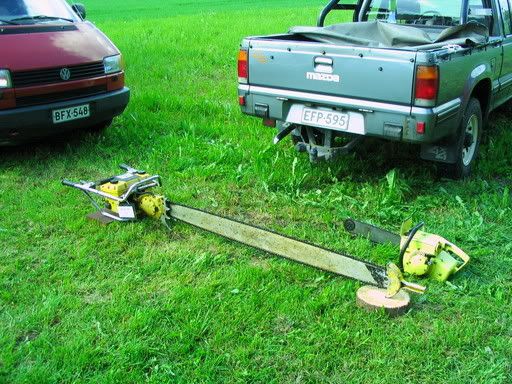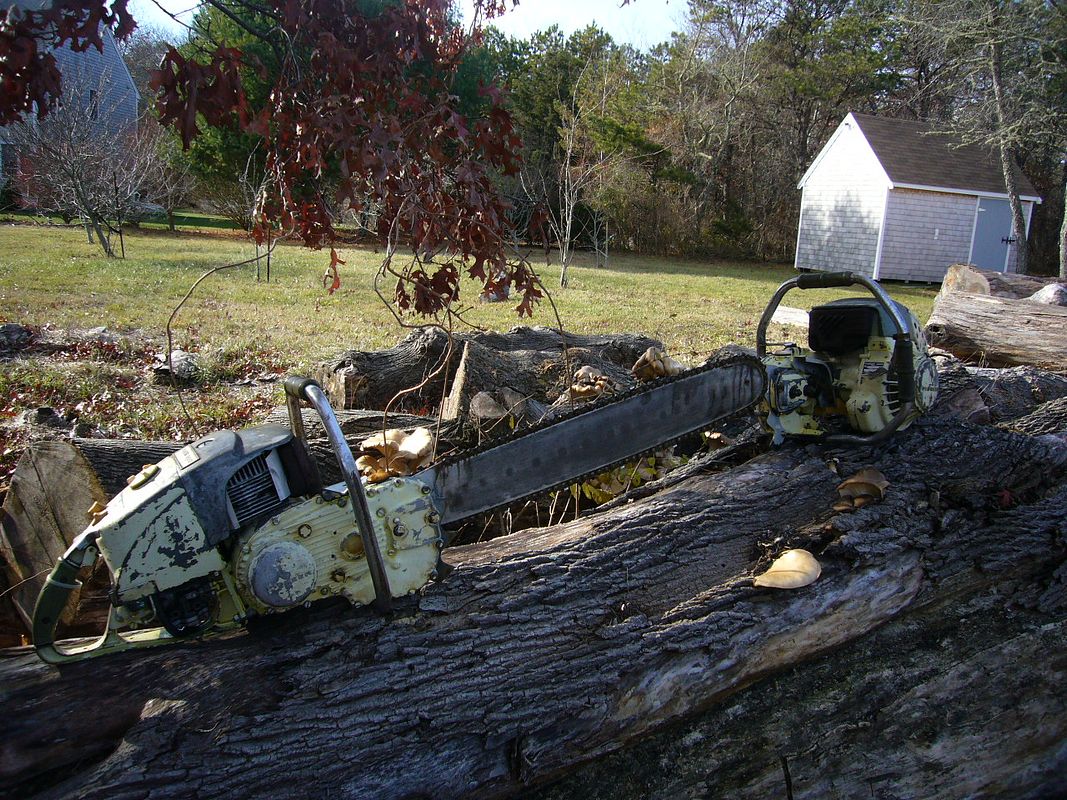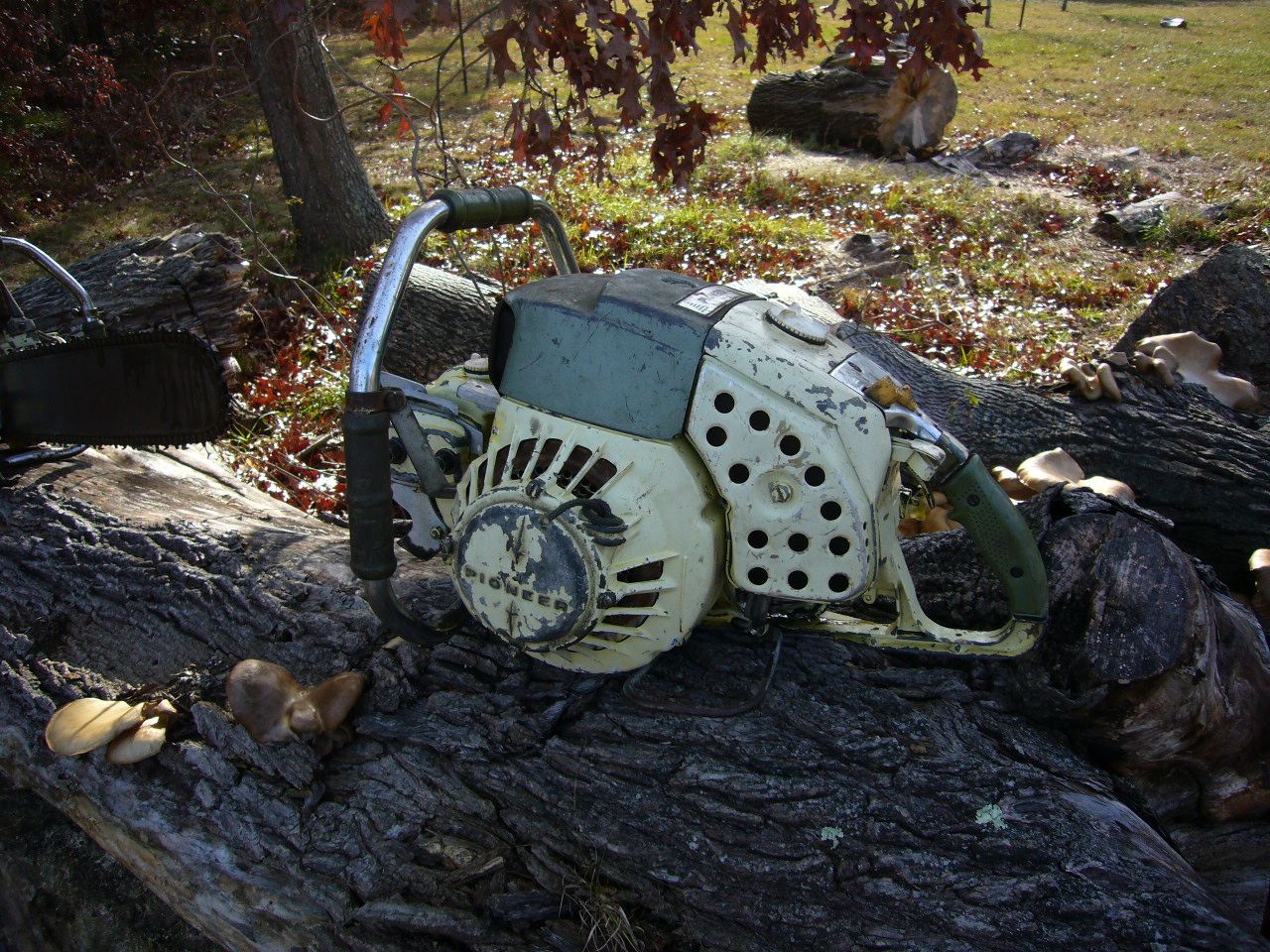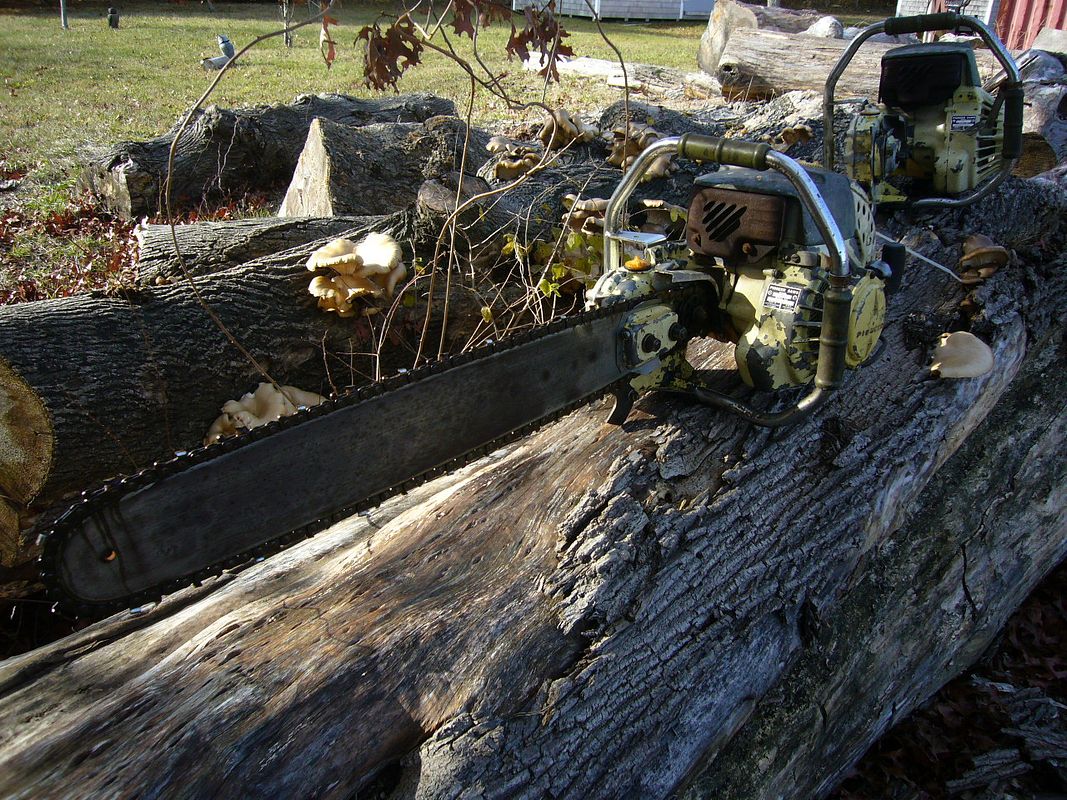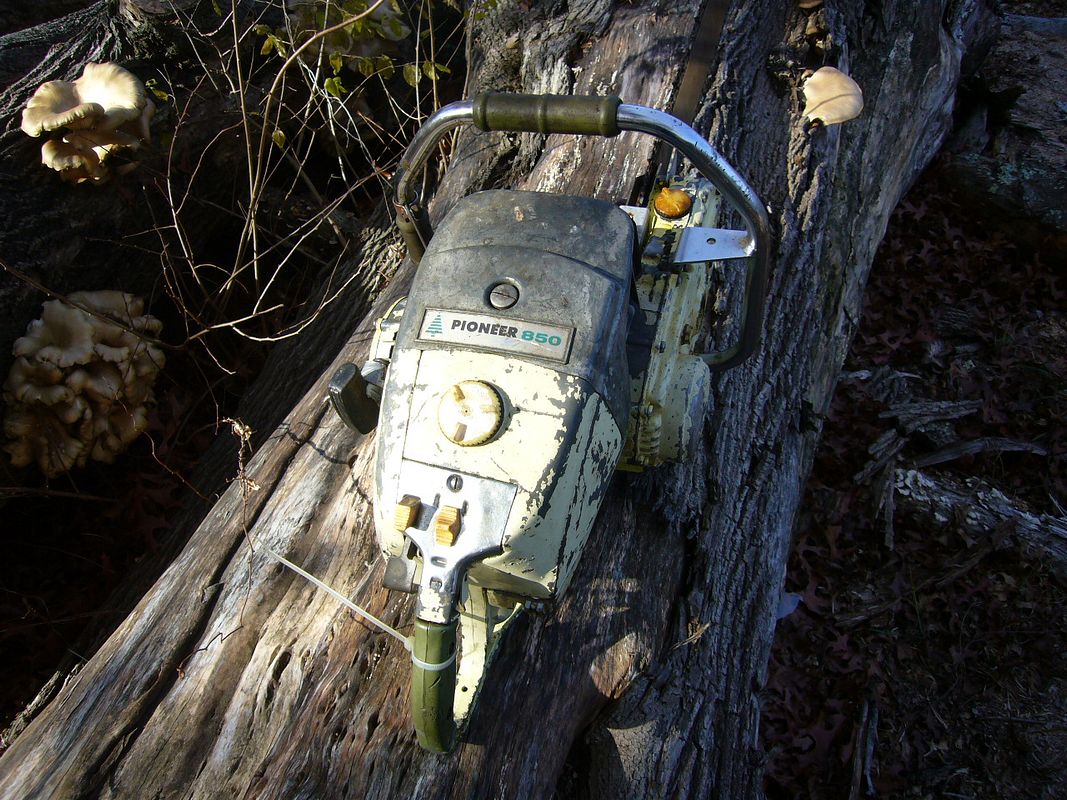RandyMac
Stiff Member
Imagine you and your partner spent the better part of four hours putting a tree on the ground. The butt is the height of a city bus, the trunk stretches out somewhat short of a city block.
First you need to get yourself and 40+ pounds of chainsaw on top of it, ladders are not supplied. You could walk down and find a spot, the Catskinner might give you a boost or scale the butt-end. I would scrape the crap from between the calks, stick my Pulaski in about halfway up, hoist the saw bar up to the top edge, using the Pulaski handle with my left hand, give the saw a bit of throttle and pull myself up. It got tricky sometimes when resetting the Pulaski, but that is why the calks are cleaned. Once up there the work begins.
While I displayed talent and a certain amount of skill falling trees, I was a better bucker. I earned my spurs early on, in the the Bull Creek basin. there were big log and debris jams leftover from the Dec '64 flood. We were clearing such things because the Park system feared, rightfully so, a repeat of the disaster caused by debris dams. A great deal of the debris came from the Bull Creek drainage, a large fan shaped area and received 21 inches of warm rain in a couple days, that melted the snowpack, it was on. The basin was upstream from the famous Rockefeller Redwood Forest. Bull Creek had/has world class timber, in an area that was renowned for big timber. It was heavily logged in the '40s and 50s, mechanized logging at it's destructive best. Would have been something to see or do, that style of high production logging, very little environmental regard, the get in there and tear out the timber mind set. Anyway, the flood picked up a huge amount of big logs, stumps, etc, which got stuck at a narrow point by the cemetery and burst, sending all that crap, three miles downstream. When it got to the Redwood forest, in the park, Bull Creek makes a hard right turn, the debris jam got stuck again, several times, and cut the creek banks, undermining the old growth, toppling them into the creek. By the time the whole thing got through 6 miles of old growth forest, it had claimed many big trees. Most of which were washed into the South Fork of the Eel River, where they headed toward the Pacific, taking highway bridges out on the way by.
I seem to have wondered off.
This was a Forestry Project and like most of our projects was either prep or training for fires. I spent many months bucking big, well seasoned DF, Redwood and various hardwood logs, into 16" rounds, that we called "poker chips". As soon as I gnawed off a round, three people grappled with and beat into firewood, most of the Redwoods were split into usable products. I used a McCulloch 660, half inch chipper on a 48" solid tip bar. On a few occasions the 660 wasn't enough, we had bigger saws, but you had to pledge your soul to the ******* at the station's sawshop, in order to get one. We improvised, hung a 60" Cannon on the 660, went to 404 chisel bit and motored on. I also spent a winter converting Redwood logs into rails and posts for the Prairie Creek State Park.
First you need to get yourself and 40+ pounds of chainsaw on top of it, ladders are not supplied. You could walk down and find a spot, the Catskinner might give you a boost or scale the butt-end. I would scrape the crap from between the calks, stick my Pulaski in about halfway up, hoist the saw bar up to the top edge, using the Pulaski handle with my left hand, give the saw a bit of throttle and pull myself up. It got tricky sometimes when resetting the Pulaski, but that is why the calks are cleaned. Once up there the work begins.
While I displayed talent and a certain amount of skill falling trees, I was a better bucker. I earned my spurs early on, in the the Bull Creek basin. there were big log and debris jams leftover from the Dec '64 flood. We were clearing such things because the Park system feared, rightfully so, a repeat of the disaster caused by debris dams. A great deal of the debris came from the Bull Creek drainage, a large fan shaped area and received 21 inches of warm rain in a couple days, that melted the snowpack, it was on. The basin was upstream from the famous Rockefeller Redwood Forest. Bull Creek had/has world class timber, in an area that was renowned for big timber. It was heavily logged in the '40s and 50s, mechanized logging at it's destructive best. Would have been something to see or do, that style of high production logging, very little environmental regard, the get in there and tear out the timber mind set. Anyway, the flood picked up a huge amount of big logs, stumps, etc, which got stuck at a narrow point by the cemetery and burst, sending all that crap, three miles downstream. When it got to the Redwood forest, in the park, Bull Creek makes a hard right turn, the debris jam got stuck again, several times, and cut the creek banks, undermining the old growth, toppling them into the creek. By the time the whole thing got through 6 miles of old growth forest, it had claimed many big trees. Most of which were washed into the South Fork of the Eel River, where they headed toward the Pacific, taking highway bridges out on the way by.
I seem to have wondered off.
This was a Forestry Project and like most of our projects was either prep or training for fires. I spent many months bucking big, well seasoned DF, Redwood and various hardwood logs, into 16" rounds, that we called "poker chips". As soon as I gnawed off a round, three people grappled with and beat into firewood, most of the Redwoods were split into usable products. I used a McCulloch 660, half inch chipper on a 48" solid tip bar. On a few occasions the 660 wasn't enough, we had bigger saws, but you had to pledge your soul to the ******* at the station's sawshop, in order to get one. We improvised, hung a 60" Cannon on the 660, went to 404 chisel bit and motored on. I also spent a winter converting Redwood logs into rails and posts for the Prairie Creek State Park.





